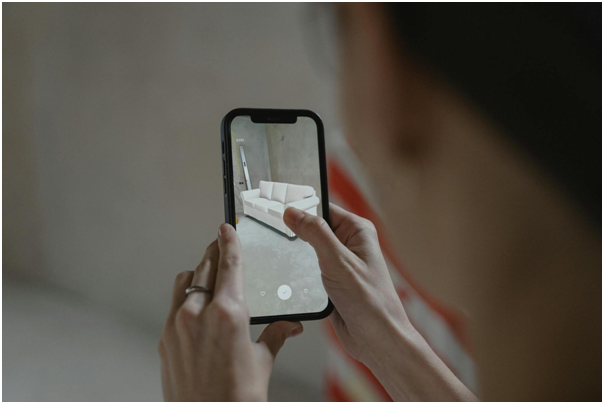Augmented reality (AR) has transformed the way businesses interact with their customers. From enhancing customer experience to providing memorable marketing campaigns, AR is the new way forward. It's not just about providing entertainment anymore; customers now expect immersive and personalized experiences, making AR a critical part of business marketing strategies. In this blog, you'll discover 10 amazing examples of how businesses have successfully used AR to create memorable customer experiences and marketing campaigns.
AR is now a reality, with the worldwide market expected to exceed $198 billion by 2025. It has become an essential tool for businesses to not only engage with their customers but also to generate revenue.
AR opens an avenue for innovation, allowing businesses to redefine their offerings and services. For example, retail businesses can use AR to create virtual fitting rooms, allowing customers to try on clothes virtually before making a purchase. This provides a unique shopping experience that is both convenient and engaging. Similarly, real estate businesses can use AR to provide virtual home tours, enabling potential buyers to immerse themselves in the property without physically being there. In the education sector, AR can transform traditional teaching methods by incorporating interactive AR models to explain complex concepts, thus making learning more engaging and fun. Moreover, businesses can use AR in their marketing campaigns to provide interactive advertisements, enhancing customer engagement and retention. In essence, AR has the potential to revolutionize various industries by providing immersive and personalized experiences.
How Do Businesses Tap Into Augmented Reality?
The journey towards augmented reality development involves several key steps for businesses. Firstly, it requires a clear conceptualization of the AR application's purpose. For instance, will the application serve to enhance product demonstrations, facilitate interactive marketing, or perhaps provide training tools for employees?
Once the purpose is established, the subsequent phase involves designing the AR application. This step is crucial as it directly impacts user experience, and therefore, involves careful planning of the interface and interactions. It typically entails a collaboration between graphic designers, UX/UI specialists, and AR developers to ensure that the application is both aesthetically pleasing and user-friendly.
The third phase involves the actual development of the AR application, which requires expertise in AR development platforms. Some commonly used platforms include Unity, ARCore, ARKit, and Vuforia. This step also incorporates testing and debugging processes to ensure the application runs smoothly and meets the desired objectives.
Post-development, businesses must also consider the application's deployment, which involves decisions regarding the platforms it will be available on (such as iOS, Android, or Web-based), and how it will be distributed to the intended users.
Lastly, it's important not to underestimate the value of post-launch support. This involves routine updates, handling user queries, resolving technical issues, and perhaps even integrating user feedback over time to improve the application.
The benefits AR brings in terms of customer engagement and business growth make it a venture worth considering for many modern businesses. Here are 10 examples of how businesses have succeeded with AR.
1. IKEA
The Swedish-based furniture company launched the IKEA Place App that offers customers an augmented reality experience. Customers can visualize how IKEA furniture will look in their home before purchasing. The app uses AR technology to create 3D models of furniture and helps customers to select the right size and style for their home.
2. Heineken
Heineken surprised its customers with an AR marketing campaign that involved scanning their beer bottles with a mobile app. Once scanned, the bottle would come alive, and customers would receive exclusive content and interactive games. The campaign was a massive success, and Heineken saw a significant increase in sales.
3. Sephora
The beauty retailer launched an AR app that allows customers to try on makeup virtually. The app provides an immersive experience where customers can test out different looks, makeup shades, and styles without ever having to physically try them on.
4. Burberry
The British luxury brand launched a unique AR experience for its customers. It combined digital fashion and mixed reality to create a collection of clothes that customers could see through their mobile devices. Customers could also take pictures with virtual Burberry clothes and share them with their friends.
5. PepsiCo
The global food and beverage giant launched an AR marketing campaign for its flagship drink, Pepsi. Customers were asked to scan their Pepsi bottle to unlock exclusive content and augmented reality experiences. The campaign resulted in significant engagement levels and brand awareness.
6. Audi
Audi launched an AR experience that enabled customers to create custom cars using AR technology. Customers selected the car model and added custom features through their mobile devices before sending the final design to their local Audi dealership.
7. Lego
The Danish toy company launched an AR app that enhances the play experience for its customers. The app allows customers to scan their Lego kits to unlock a virtual world where they can interact with their Lego creations.
8. Coca-Cola
The global beverage brand launched an immersive AR experience named Coca-Cola Magic. The experience allowed customers to interact with a virtual vending machine, unlock rewards, and share their experiences on social media.
9. Mercedes-Benz
Mercedes-Benz launched an AR app that allowed customers to experience the inside of its luxury cars through their mobile devices. The app not only provided a 360-degree view of the car's interior, but it also allowed customers to customize the color and features of the car before purchasing.
10. Nike
The sports apparel brand launched an AR-powered app that provided a unique in-store experience. The app used AR technology to create a virtual store where customers could interact with products and select custom designs before making a purchase.
Businesses can use augmented reality to provide an immersive and personalized experience for their customers. AR is an essential tool that businesses can use to enhance customer experiences, create memorable marketing campaigns, and increase brand awareness. By embracing AR technology, businesses can set themselves apart from the competition and create memorable experiences for their customers.
